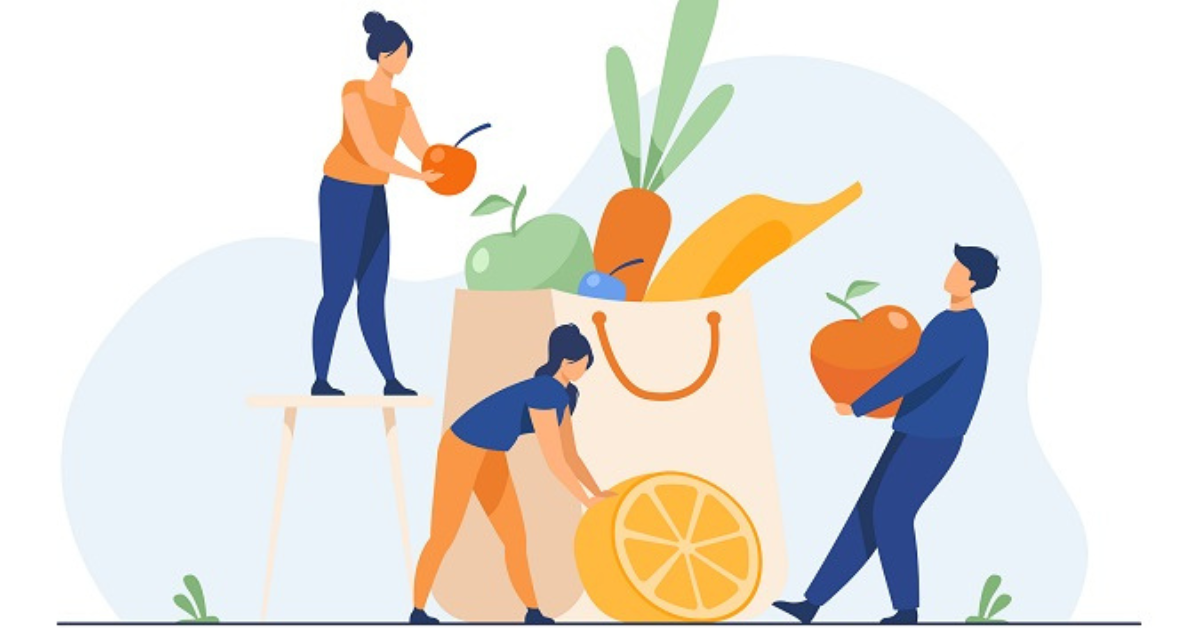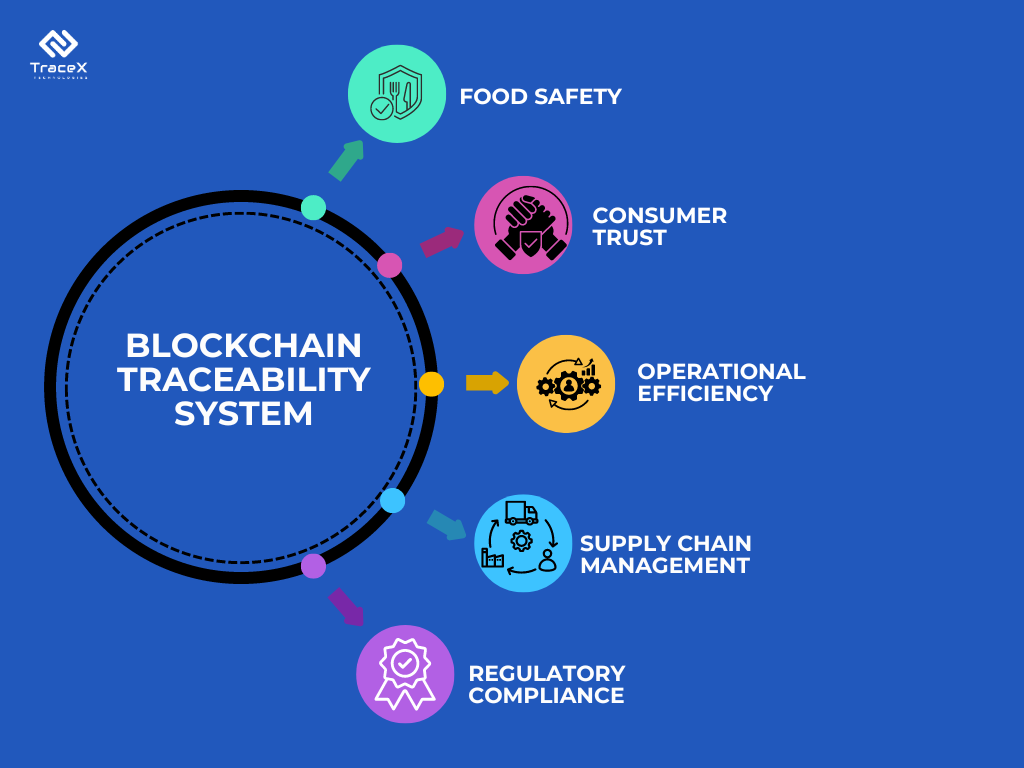Contact: +91 99725 24322 |
Menu
Menu
Quick summary: Discover the essence of effective traceability with these six essential best practices. Uncover how meticulous tracking enhances accountability, transparency, and quality across your processes.

Food systems are critical for the well-being of people and the planet. The food and agriculture sector is the largest employer in the world, despite of people living in poverty. One-third of the food produced is wasted and food systems are responsible for 25% of global greenhouse gas emissions which threatens crop yields. The growing population has caused immense strain on these food systems which calls for the importance of traceability in the food supply chain
The journey of food from farm to the consumer’s table is a complex one. The supply chain is a vital network with interconnected systems connecting the source of food to the final consumption. The relatively short shelf life of food products is a major challenge in the food and agriculture sector. There has been a paradigm shift in consumer behaviours.
In a dawn of the trust revolution, Food Traceability has emerged as a top priority in building resilience in food supply chains. Defined as the ability to track movement of food through various stages of production, processing and distribution, food traceability enables identification of sources of food contamination and fraud in the supply chain. This assures a safe and quality product to be delivered to the end consumer. Ensuring traceability is vital to build transparency and trust in the end-to-end supply chain. Disruptive technologies like blockchain and Industry 4.0 digital technologies can accelerate implementation and adoption of solutions across the global food chain and deliver food safety and sustainability.
Tracking and Tracing are the two main components of Traceability. Location of a particular product unit or a batch at a given point of time in the production process is known as Tracking which extends from the processing stage, distribution and end consumption in a food supply chain also referred to as the downstream path. The record of how a product has travelled its journey from source to the end user is known as Tracing, referred to as the upstream path.
The one step back and one step forward approach of traceability will track the movement of the product forward through the supply chain and enable to trace a product back to understand the chain of custody of product and raw materials. This will ensure a transparent farm to fork journey and contribute to efficient supply chain management and food safety. For a food product, traceability will allow the suppliers, consumers and other stakeholders in the ecosystem to identify the farm, the inputs used, the location of the farm and the whole product life cycle.
Track and Trace solutions offer complete visibility into the food supply chain. Track and Trace helps in recall management, ensuring food safety and elimination food contamination. The tracking of products along the supply chain leverages a robust order management system and the sharing of information among the stakeholders enhances supplier relationship management. Harmonization is achieved by seamless integration of data with existing systems.
Internal traceability refers to the ability of a company to track and trace the movement of products or materials within its own operations or supply chain. This involves monitoring the flow of goods, ingredients, or components from production through various stages of processing, packaging, and distribution within the organization’s facilities.
On the other hand, external traceability involves tracking and tracing products or materials beyond the company’s own operations, extending to the entire supply chain from suppliers to end customers. This includes monitoring the movement of goods from suppliers, through manufacturing and distribution channels, until they reach the final consumers. External traceability enables companies to ensure the authenticity, quality, and safety of their products while meeting regulatory requirements and addressing consumer demands for transparency and accountability.
Food safety has a great impact on a number of organizations which need to initiate a food recall. Identification of products and failure to establish product scope and effective traceability will have a devastating effect on the entire ecosystem.
The product should be defined and the data associated with that product should be available to have traceability in place in the supply chain.
The industry should work towards standardization and best practices to improve traceability.
Traceability is crucial for food safety, quality control and sustainability in the food industry. Traceability practices help companies to manage food safety risks, improve supply chain efficiency and build consumer trust. Let us look at the 6 best practices normally followed in traceability systems.
Traceability is not information. It is the data which is retrieved, arranged and stored. Traceability system is a storage and retrieval system. There is no relationship between traceability and origin, rather it is the information relating to the origin of the product and the other information which should be recorded with it. As the product passes from one actor to the other in the network, the traceability system collects and records the data points to perform real-time tracking of the product’s movement from the origin to destination.
The one up/one down practice is the best one recommended that organizations need to work towards. Record where the product was sent (Forward) and where it came from (Backward) at each point in the supply chain.
There are various points along the supply chain where data capture is required to follow the product movement. These are referred to as the Critical Tracking Events (CTEs). This could be in transporting from one facility to another, the changes that occur as products are manufactured during processing. Tracing forward requires accountability and hence these points need to be recorded end to end along the supply chain. At each CTE, the Key Data Elements (KDEs) must be captured to enable tracking and tracing the product movement throughout the supply chain. The concepts of CTEs and KDEs were proposed in 2010, enabling stakeholders to clearly identify data elements required for tracing food products along the supply chain. The CTE/KDE framework provides the what, where and when information about products along the supply chain which need to be recorded and shared among the stakeholders to ensure end to end visibility of the food supply chain.
The implementation of traceability necessitates the use of codes or numbers which provide identification and enable traceability. These codes are known as Traceability codes. All traceable items must be uniquely identified by a Unique identifier or a Batch code. Batch codes can be used to track products which have a common problem or with the same expiry date. Batch numbers are issued to a group of products that were manufactured at the same time. This helps to locate products whose life has expired or when a product has to be recalled. The source of the issue can be tracked, and the problem can be corrected.
There should be processes to link identities of raw materials to those of finished product. When value additions are done for a product during further processing, the new product should have a different identifier. A traceability lot code is assigned to each stock lot of a product which arrives at the processing facility.
Product and process properties must be recorded through time stamping and linked to identifiers. It is also important that this data is accessible and shared. The group of products need to be defined to limit the scope of a product recall. Traceability depends on assigning identifiers to units and recording their attributes. Accurate and up to date records should be maintained at every stage in the supply chain. This should include the information on product’s origin, its movement throughout the supply chain and the processing and packaging steps involved.
A recall plan should be developed in case of a product recall. This plan should include procedures for identifying and locating the affected product. A risk assessment on the criticality of the issue needs to be evaluated. The relevant stakeholders need to be notified followed by the investigation process to determine the root causes and how it can be prevented. The recall strategy should be developed including scope of recall, method of contamination and timeline. The recall should be executed as per the plan. A well-designed recall plan is critical for protecting public health and minimizing the impact of a recall on the company’s reputation and profitability.
Standard operating Procedures for product identification and traceability has to be mandatorily followed. This allows for complete and up to date histories of all products that have moved from the source to destination in a food chain. All the components need to undergo quality checks at each stage of the cycle to adhere to standards and should be documented electronically.
Labelling of food products is also an important tool for both consumers and the other stakeholders in the chain.
Traceability is also enabled by standards like GS1 standards and Barcode and RFID technologies. QR codes carry more data than any of these traditional barcodes. Blockchain technology helps in automated data collection and thereby assure data accuracy and security.
Cloud based software solutions give a risk-based approach in processing quality in traceability systems. Blockchain solutions
capture data in real-time on a single platform in immutable and decentralized ledgers to build a robust traceability system. Track and Trace systems leveraging blockchain technologies helps to increase supply chain management and enable end to end visibility in food supply chains.
Transparency and communication are essential for effective traceability. All the stakeholders in the supply chain should be informed about the traceability system and should be able to access the data on the products. This collaborative approach helps to build trust and accountability in the food system.

TraceX Blockchain traceability solutions offer a robust platform for tracking and tracing products throughout the supply chain, from farm to fork. Leveraging blockchain technology, TraceX ensures transparency, security, and immutability of data, enabling stakeholders to access accurate and real-time information about product origin, production processes, and distribution channels. By recording each transaction on a decentralized ledger, TraceX enhances trust and integrity in the supply chain, mitigates risks of fraud or counterfeiting, and facilitates compliance with regulatory standards. With TraceX, companies can streamline their operations, improve efficiency, and build consumer confidence by delivering products with verified authenticity, quality, and sustainability credentials.
In conclusion, implementing these six best practices for traceability in the food supply chain can significantly enhance transparency, efficiency, and safety throughout the entire journey from farm to fork. By leveraging technology, standardizing processes, fostering collaboration among stakeholders, and prioritizing data accuracy, companies can mitigate risks, minimize the impact of recalls, and build trust with consumers. Embracing traceability not only ensures compliance with regulatory requirements but also enables companies to proactively address issues, optimize operations, and deliver high-quality, traceable products to meet the evolving needs and expectations of consumers in today’s dynamic marketplace.
